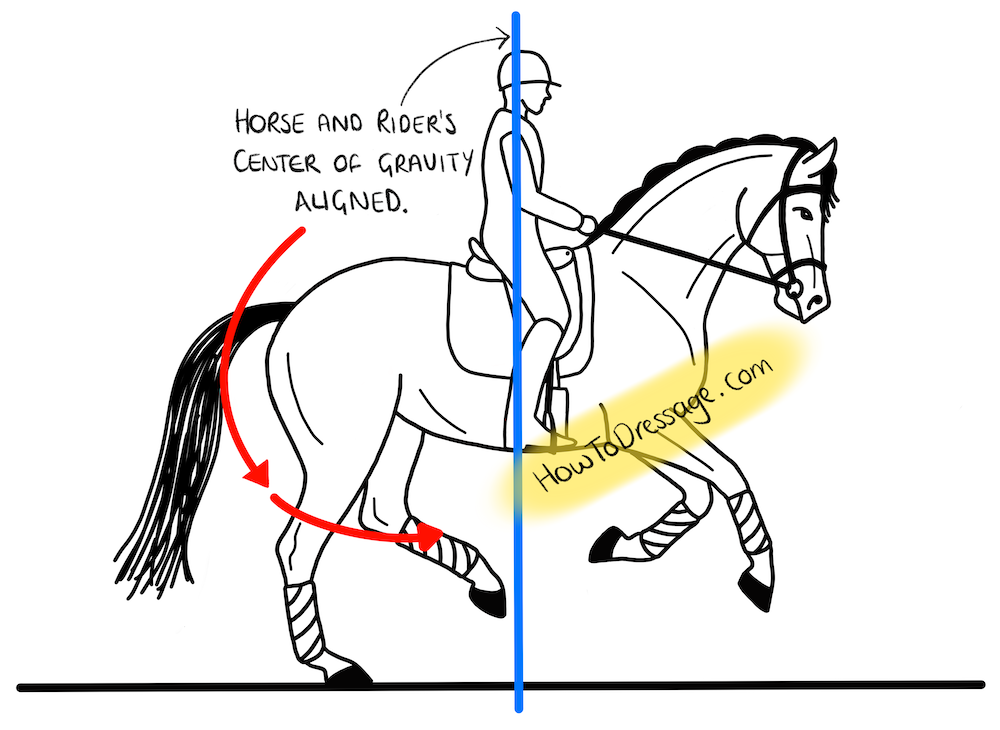Do you love horseback riding? It’s such an amazing experience, isn’t it? The feeling of being in sync with a powerful and majestic animal is truly exhilarating. But did you know that maintaining proper posture while horseback riding is crucial for both your safety and the comfort of the horse? In this article, we will discuss some key tips for maintaining proper posture in horseback riding that will not only make you look more elegant in the saddle but also help you ride more effectively and prevent any potential injuries. So, let’s dive in and learn more!
Firstly, let’s talk about the importance of sitting up straight in the saddle. Many riders tend to slouch or lean forward, especially when riding for long periods. However, this can cause imbalance and put unnecessary strain on your horse’s back. By sitting up straight with your shoulders back and your head lifted, you will have a more secure seat and maintain better control of your horse’s movements.
Another important aspect of maintaining proper posture is keeping your legs in the correct position. Your heels should be down and your toes pointed slightly outwards. This will help you maintain a stable position and stay balanced. It’s also important to keep your legs close to the horse’s sides, using your inner thighs to grip and support your body.
Lastly, let’s not forget about the position of your hands and arms. Your hands should be held low and slightly in front of the saddle, with a soft yet firm grip on the reins. Avoid pulling or yanking on the reins, as this can be uncomfortable for the horse and disrupt the communication between you and your horse.
So, there you have it – some key tips for maintaining proper posture in horseback riding. Remember, riding with good posture not only looks elegant, but it also ensures your safety and the well-being of your horse. In our upcoming posts, we will delve deeper into each of these aspects and provide you with more detailed tips and advice on how to improve your posture in the saddle. Stay tuned for more enlightening and engaging content on horseback riding!
Tips for Maintaining Proper Posture in Horseback Riding
Horseback riding is a skill that requires not only physical strength and coordination, but also proper posture. Maintaining good posture while riding can have numerous benefits, not only for the rider but also for the horse. In this article, we will explore the advantages of maintaining proper posture in horseback riding, discuss the basics of proper posture, provide exercises to improve posture, talk about the right equipment to support proper posture, address common mistakes and how to correct them, and offer tips for different riding styles and movements. So let’s dive in and discover how you can enhance your riding experience through proper posture.

Benefits of Maintaining Proper Posture in Horseback Riding
Improved balance and stability
One of the key benefits of maintaining proper posture in horseback riding is improved balance and stability. When your body is properly aligned, it is easier to maintain a stable position on the horse’s back. This allows you to stay centered and balanced, even during challenging movements or unexpected actions from the horse. Proper posture helps distribute your weight evenly, lowering the risk of tipping or falling off the horse.
Reduced strain on the horse’s back
Proper posture not only benefits the rider but also the horse. When you maintain alignment and balance, you reduce the strain on the horse’s back. By sitting in a neutral position with your weight evenly distributed, you avoid putting excessive pressure on specific areas of the horse’s body, such as the withers or the lumbar region. This can help prevent soreness or discomfort for the horse, allowing for a more comfortable riding experience.
Enhanced communication with the horse
Maintaining proper posture in horseback riding is also crucial for effective communication with the horse. Your body position and alignment send subtle signals to the horse, influencing their movements and responsiveness. When you have good posture, you can use your body effectively to communicate cues and commands to the horse, making your riding experience more harmonious and responsive. Improving your posture can improve the bond and connection you have with your horse.
Understanding the Basics of Proper Posture
To maintain proper posture in horseback riding, it is important to understand the basics of body alignment. Here are some key aspects to consider:
Alignment of the head, shoulders, and hips
Proper alignment starts with the head, shoulders, and hips. Imagine a straight line running from the top of your head down through your spine, aligning your shoulders and hips. Avoid leaning too far forward or backward, as this can disrupt your balance and compromise your posture. Keeping your head up and looking forward helps maintain alignment and promotes better awareness of your surroundings.
Positioning of the legs and feet
Proper posture also involves the positioning of your legs and feet. Keep your legs relaxed and close to the horse’s sides, maintaining a slight bend in your knees. Your heels should be down and your toes pointing slightly outward. This helps maintain stability and allows for effective communication with the horse through your legs.
Maintaining a neutral spine
A neutral spine is essential for good posture in horseback riding. Avoid arching your back or slouching, as both can compromise your balance and stability. Instead, aim to maintain a natural curve in your spine, with your shoulders relaxed and your chest open. Engage your core muscles to support your spine and maintain stability.
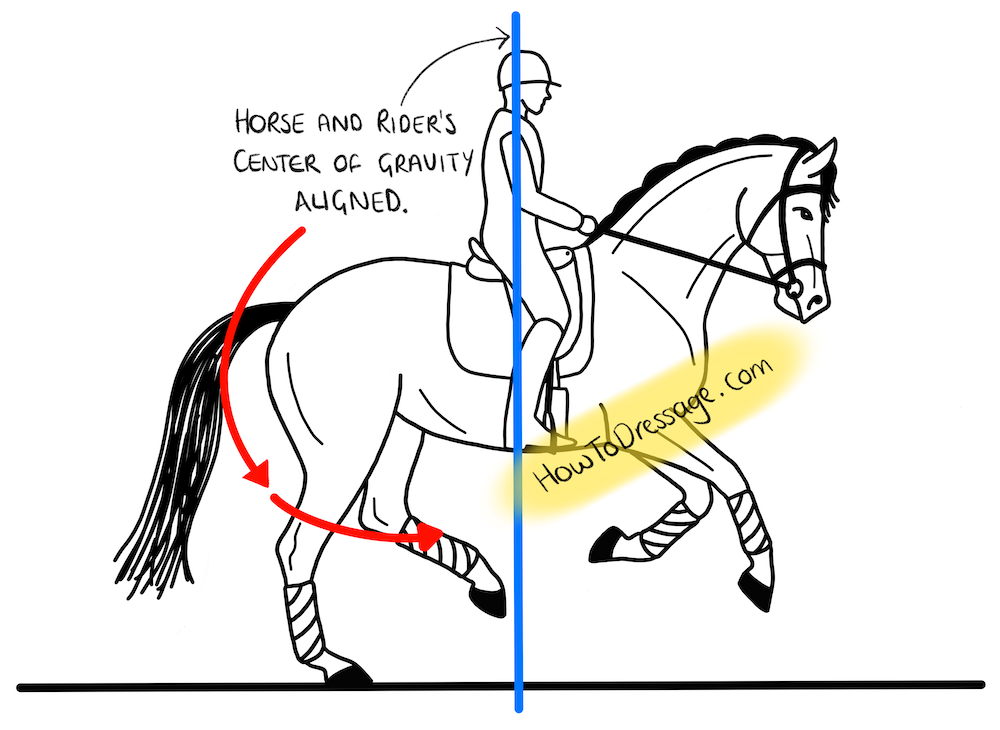
Exercises to Improve Posture in Horseback Riding
Maintaining proper posture in horseback riding requires strength, flexibility, and body awareness. Here are some exercises that can help improve your posture:
Core strengthening exercises
A strong core is essential for good posture in horseback riding. Exercises such as planks, leg raises, and Russian twists can help strengthen your core muscles. A strong core provides stability and supports your spine, allowing you to maintain proper alignment while riding.
Stretching routines
Flexibility is also important for maintaining proper posture. Incorporate stretching routines into your regular exercise regimen to improve flexibility in your hips, spine, and legs. Simple stretches such as lunges, hip openers, and cat-cow stretches can help improve your range of motion and enhance your riding posture.
Balance training drills
Balance training drills can help improve your stability and body awareness while riding. Practice standing on one leg, doing yoga poses such as tree pose or warrior III, or using balance boards or stability balls to challenge your balance. These exercises will enhance your ability to maintain a centered and balanced position while on a moving horse.
Choosing the Right Equipment to Support Proper Posture
In addition to exercises and training, choosing the right equipment can also support proper posture in horseback riding. Consider the following factors:
Proper saddle fit
A well-fitting saddle is crucial for proper posture and rider comfort. Ensure that your saddle fits both you and your horse properly. A saddle that is too small or too big can affect your balance and stability, leading to compromised posture. Consult with a professional saddle fitter to ensure you have the right saddle for your body and riding style.
Importance of stirrup length
Stirrup length can also impact your posture while riding. Your stirrups should be adjusted to a length that allows your legs to hang long and relaxed, with a slight bend in your knees. Adjusting stirrup length can help you maintain proper leg position and support your balance.
Use of supportive riding gear
Certain riding gear can provide additional support for proper posture. Consider using a riding helmet that fits properly and provides adequate support for your head and neck. Additionally, wearing a riding vest or back support belt can help promote better posture and reduce strain on your back muscles.
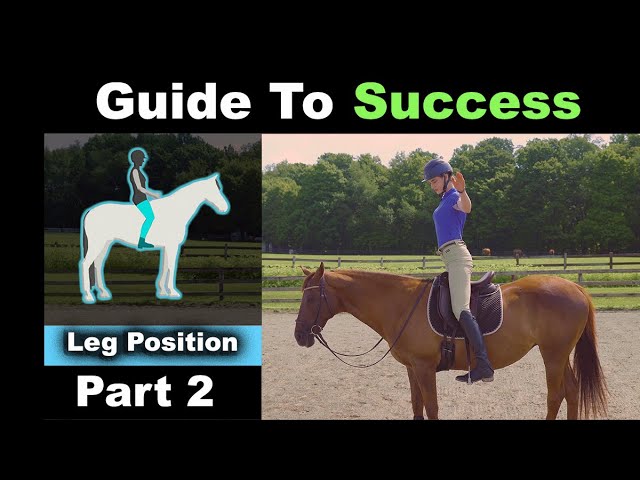
Common Mistakes in Posture and How to Correct Them
Maintaining proper posture can be challenging, especially when you’re focused on riding and controlling the horse. Here are some common mistakes in posture and how to correct them:
Rounded shoulders
Rounded shoulders are a common mistake in posture while riding. This can happen when you’re tense or not actively engaging your core muscles. To correct rounded shoulders, consciously roll your shoulders back and down, opening your chest. Engage your core muscles and avoid hunching forward.
Slouching in the saddle
Slouching in the saddle is another common mistake that can impact your balance and stability. To correct this, imagine a string pulling your head up towards the sky, aligning your spine. Engage your core muscles and sit tall in the saddle, maintaining a neutral spine.
Poking the chin forward
Poking the chin forward is a posture mistake that can strain your neck and disrupt your alignment. Keep your chin parallel to the ground and avoid jutting it forward. This helps maintain proper alignment in your spine and prevents strain on your neck muscles.
Importance of Regular Practice and Consistency
Improving and maintaining proper posture in horseback riding requires regular practice and consistency. Here’s why:
Repetition and muscle memory
By consistently practicing proper posture, you develop muscle memory. This means that your body becomes accustomed to the correct alignment and positioning, making it easier to maintain proper posture automatically while riding. Regular practice reinforces good habits and helps you ride more effectively.
Integration of posture into daily riding routines
Incorporate posture exercises and drills into your daily riding routines. Practice maintaining proper posture during warm-ups, cool-downs, and throughout your rides. By consistently focusing on your posture, it becomes a natural part of your riding experience and enhances your overall performance.
Progressive improvement over time
Improving your posture takes time and patience. By regularly practicing and consciously working on your posture, you will notice gradual improvements over time. Small adjustments and corrections lead to more significant changes and improvements in your overall riding posture.
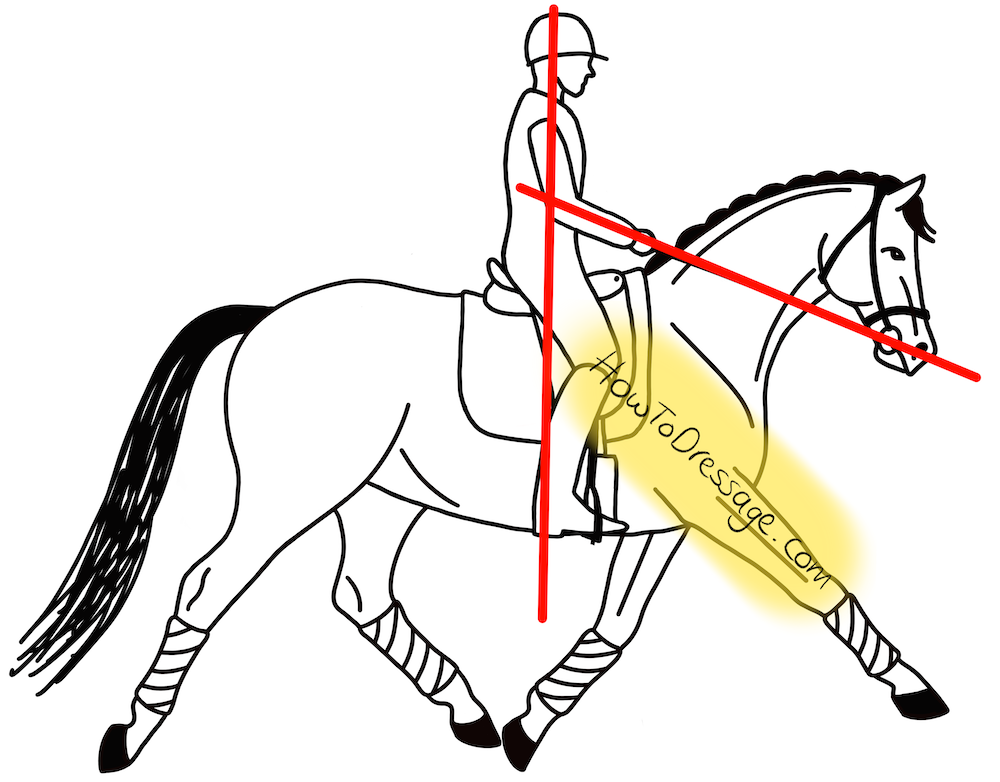
Posture Tips for Different Riding Styles
Proper posture may vary depending on the style of riding. Here are some posture tips for different riding styles:
English riding
In English riding, proper posture involves an upright position with a straight line from the shoulder, hip, and heel. Keep your hands relaxed and in line with your horse’s withers. Maintain a light contact with the horse’s mouth and avoid leaning too far forward or backward.
Western riding
In Western riding, proper posture involves sitting deep in the saddle, with a slight tilt forward in the pelvis. Your legs should hang long and relaxed, and your reins should be held with a light, relaxed grip. Maintain a straight line from the shoulder, hip, and heel for balance and stability.
Dressage
In dressage, proper posture is crucial for effective communication with the horse and executing precise movements. Sit tall and upright in the saddle, with your seat bones evenly aligned. Your elbows should be relaxed and by your sides, and your legs should be softly draped around the horse’s sides.
Understanding the Role of Body Awareness in Posture
Body awareness plays a significant role in maintaining proper posture while horseback riding. Here’s why it matters:
Developing a sense of body alignment
Body awareness involves developing a sense of your body’s position and alignment while riding. By actively focusing on your posture and body positioning, you can better identify when you are out of alignment and make the necessary adjustments. Developing body awareness allows you to maintain proper posture more consistently.
Listening to the horse’s feedback
Body awareness also includes listening to the feedback your horse provides. A horse can give you subtle indications when you are in or out of balance. By paying attention to your horse’s movements and responses, you can adjust your posture accordingly, improving your connection and communication.
Fine-tuning subtle movements
Body awareness helps you fine-tune subtle movements that are necessary for proper posture. You can better sense and control your body’s position, making slight adjustments as needed. In horseback riding, even the smallest movements can have a significant impact on your posture, balance, and effectiveness as a rider.
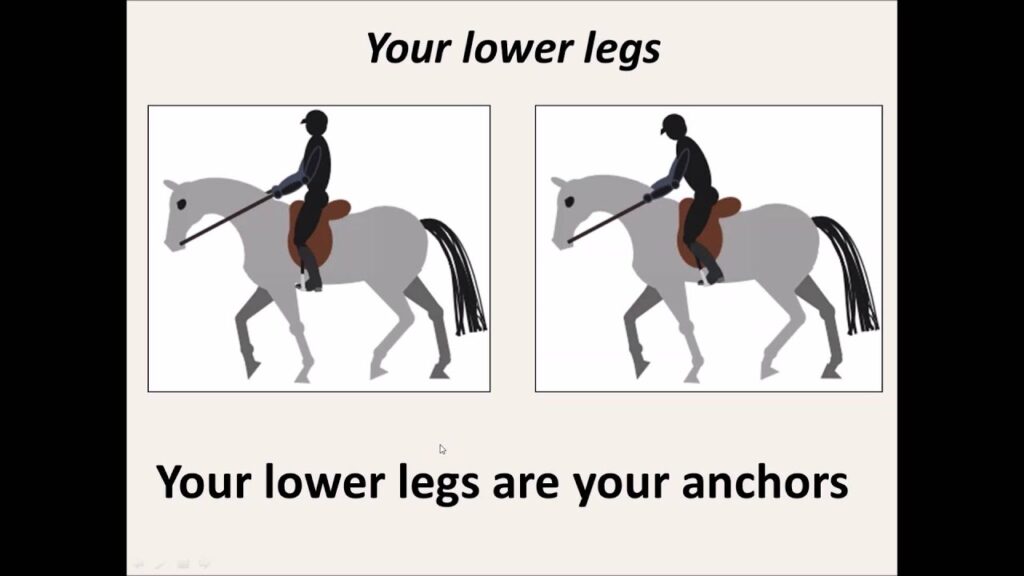
Proper Posture for Different Movements and Gaits
Maintaining proper posture is essential for different movements and gaits. Here are some posture tips for specific horseback riding actions:
Sitting trot
During the sitting trot, maintain a deep seat in the saddle, allowing your hips to move with the horse’s motion. Engage your core muscles to maintain stability, and keep your upper body tall and relaxed. Avoid bouncing or collapsing through your lower back.
Cantering
In the canter, sit deep in the saddle and allow your body to follow the horse’s motion. Your upper body should remain tall and relaxed, avoiding leaning too far forward or backward. Engage your core muscles and align your upper body with the direction of movement.
Jumping
When jumping, maintain a light seat and slightly forward upper body position. Keep your hands soft and allow your body to follow the horse’s motion over the jump. Maintain a balanced and secure position over the fence, with proper alignment from head to heel.
Incorporating Posture Exercises in Warm-up and Cool-down Routines
Incorporating posture exercises in your warm-up and cool-down routines can further support proper posture. Consider the following exercises:
Dynamic stretches
Dynamic stretches involve moving your body through a full range of motion. Incorporate exercises such as arm circles, leg swings, or trunk rotations into your warm-up routine. These movements activate your muscles, increase blood flow, and prepare your body for riding with proper posture.
Pilates-inspired movements
Pilates exercises can help strengthen your core and support proper posture. Include exercises such as the Pilates bridge, the hundred, or the plank in your warm-up or cool-down routine. These exercises target the muscles essential for good posture and enhance your body’s stability.
Relaxation techniques
After a riding session, focus on relaxation techniques to release tension and promote better posture. Incorporate deep breathing exercises, gentle stretching, or yoga poses to promote relaxation and prevent muscle stiffness. Relaxation techniques can also help you connect with your horse and wind down after a ride.
How to Assess and Evaluate Your Posture
Assessing and evaluating your posture is crucial for identifying areas that need improvement. Here’s how you can do it:
Recording riding sessions for self-review
Record your riding sessions using a camera or smartphone. Review the recordings to assess your posture and body alignment. Look for any areas of tension, misalignment, or common mistakes. Self-review allows you to objectively analyze your posture and make necessary adjustments.
Working with a qualified instructor or coach
Seek guidance from a qualified horseback riding instructor or coach. They can provide valuable feedback on your posture and body alignment. Working with an instructor allows you to receive personalized guidance and correction, helping you improve your posture effectively.
Utilizing video analysis tools
Video analysis tools can assist in evaluating your posture and body position. There are various smartphone applications and computer software available that allow you to view your riding videos frame by frame, making it easier to spot areas that require improvement. Utilize these tools to enhance your awareness and promote better posture.
Addressing Posture Related Issues and Injuries
Maintaining proper posture can also help prevent posture-related issues and injuries. Here are some common issues and exercises to address them:
Common posture-related injuries
Posture-related injuries can occur when proper alignment and stability are compromised. These injuries may include lower back pain, shoulder and neck strain, or muscle imbalances. Consult with a healthcare professional or physical therapist to address specific posture-related injuries effectively.
Rehabilitation exercises
Rehabilitation exercises can help address posture-related injuries and imbalances. Work with a physical therapist or rehabilitation specialist to develop a personalized exercise plan that targets the affected areas. Rehabilitation exercises promote proper alignment, strengthen the weakened muscles, and restore balance in the body.
Seeking professional advice
If you are experiencing persistent posture-related issues or injuries, it is essential to seek professional advice. Consult with a qualified healthcare professional, such as a physical therapist, chiropractor, or sports medicine specialist. They can assess your situation, provide expert advice, and develop a plan to address your specific needs.
The Role of Mental Focus and Visualization in Maintaining Proper Posture
Proper posture in horseback riding is not just about physical alignment; it also involves mental focus and visualization. Here’s why it matters:
Positive mindset and concentration
Maintaining proper posture requires a positive mindset and concentration. Focus on your body alignment and visualize yourself sitting tall and balanced on the horse. A positive mindset and concentration help you maintain the mental awareness necessary for proper posture.
Visualizing correct alignment
Visualization is a powerful tool for enhancing your posture. Visualize each component of your posture, from head to heel, and imagine yourself riding with perfect alignment. By visualizing correct posture, you can train your mind to support your body in maintaining proper alignment while riding.
Mental cues for posture correction
Develop mental cues that help you maintain proper posture while riding. For example, you might associate a specific word or image with maintaining a neutral spine or keeping your shoulders back. These mental cues can be powerful reminders that support your body in maintaining proper alignment.
Conclusion
Maintaining proper posture in horseback riding is essential for balance, stability, and effective communication with the horse. It provides numerous benefits, including improved balance and stability, reduced strain on the horse’s back, and enhanced communication between rider and horse. By understanding the basics of proper posture, practicing specific exercises, choosing the right equipment, and addressing common mistakes, you can enhance your riding experience and take your skills to new levels. Remember that proper posture is a continuous journey that requires regular practice, consistency, and awareness. So, saddle up, align your body, and enjoy the ride with confidence and proper posture!
Questions and Answers
-
How does maintaining proper posture improve balance in horseback riding? Maintaining proper posture improves balance in horseback riding by aligning the head, shoulders, and hips, allowing the rider to stay centered and stable on the horse’s back.
-
How does proper posture reduce strain on the horse’s back? Proper posture distributes the rider’s weight evenly, reducing strain on specific areas of the horse’s back, such as the withers or the lumbar region.
-
How can I improve my posture in horseback riding? You can improve your posture in horseback riding by practicing core strengthening exercises, incorporating stretching routines, and working on balance training drills.
-
What equipment is necessary to support proper posture in horseback riding? Choosing a well-fitting saddle, adjusting stirrup length correctly, and using supportive riding gear such as a riding helmet and back support belt can all support proper posture in horseback riding.
-
What are some common mistakes in posture while horseback riding? Some common mistakes in posture while horseback riding include rounded shoulders, slouching in the saddle, and poking the chin forward.
-
How does body awareness contribute to maintaining proper posture? Body awareness helps you recognize when your posture is out of alignment and make the necessary adjustments. It also allows you to sense and control subtle movements that support proper posture.
-
What is the proper posture for different riding styles? The proper posture for different riding styles varies, but generally involves sitting upright with a straight line from the shoulder, hip, and heel. Each riding style has specific nuances to consider.
-
How can I assess and evaluate my posture in horseback riding? You can assess and evaluate your posture in horseback riding by recording your riding sessions for self-review, working with a qualified instructor or coach, and utilizing video analysis tools.
-
What are some rehabilitation exercises for posture-related injuries? Rehabilitation exercises for posture-related injuries may include targeted exercises to strengthen weakened muscles, improve alignment, and restore balance. Consult with a healthcare professional for personalized recommendations.
-
How does mental focus and visualization help maintain proper posture? Mental focus and visualization help maintain proper posture by enhancing mental awareness, visualizing correct alignment, and providing cues for posture correction during horseback riding.
